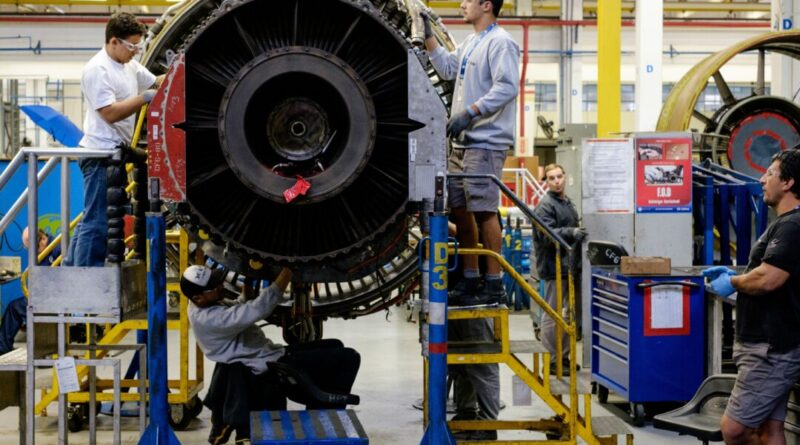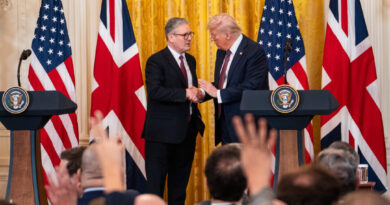GE Aerospace Reports Strong Sales as It Returns to Manufacturing Roots
The company’s stock rose more than 6 percent on April 22.
News Analysis
As GE Aerospace signals a return to its roots in manufacturing, company revenues rose across all business segments. The company’s stock rose more than 6 percent on April 22 on better-than-expected first-quarter results.
Orders were strong for both equipment and services. At Commercial Engines & Services (CES), the company secured a significant engine commitment from Japanese airline All Nippon Airways for more than 75 LEAP (Leading Edge Aviation Propulsion) engines to power its fleet of 13 Airbus A321neo and up to 22 Boeing 737 MAX aircraft.
Total operating profit was $2.1 billion, up 38 percent and above FactSet’s consensus of $1.9 billion. The profit margin reached 22.6 percent, up 40 basis points from a year earlier.
“GE Aerospace had a strong start to 2025 with orders and revenue up double digits, driven by commercial services, and adjusted EPS [earnings per share] up 60 percent,” said GE CEO H. Lawrence Culp, Jr.
Georgios Koimisis, an associate professor of finance, told The Epoch Times that the solid increase in new orders helped boost GE Aerospace’s momentum, especially in its commercial engine business.
The company’s first-quarter results arrived nearly a year and a half after the company was spun off from the old GE and debuted on Wall Street, suggesting it may be better off as a standalone entity than as part of a conglomerate.
This separation allowed GE Aerospace to return to its roots in manufacturing efficiency, quality, and innovation, and to cope with a challenging macroeconomic environment, as management described during the earnings conference call.
Culp said the company has taken strategic actions, such as controlling costs and leveraging available trade programs, to cope with the macroeconomic dynamics. The company forecast low double-digit revenue growth and operating profit between $7.8 billion and $8.2 billion for the year.
The rising backlog highlights the company’s reliance on organic growth: the expansion of its core customer base. This business strategy supports and reinforces efficiency, product quality, and innovation.
For instance, the company received a commitment from Malaysia Aviation Group for 60 CFM LEAP engines to power 30 Boeing 737 MAX aircraft. In addition, it signed an agreement with Korean Air for up to 30 Boeing 787-10s and 20 777-9s using its GEnx and GE9X engines.
GE Aerospace’s reliance on organic growth differs radically from the old GE business strategy, which relied on non-organic growth and the acquisition of other companies at inflated prices, sometimes outside its core business. This strategy created a few synergies but also generated plenty of management issues as the conglomerate became too large to be managed effectively.
As a result, old GE fell into a value trap: a company with a low valuation that continued to grow, destroying rather than creating shareholder value. Investors fled its shares, which underperformed the broader market.
That was a turning point for the GE conglomerate, as its leadership split it into three companies: GE Aerospace, GE Vernova, and GE HealthCare.
This move helped lift GE Aerospace’s stock. Its shares have risen about 26 percent over the past year, outperforming the S&P 500, which has gained 5.5 percent during the same period.
The company’s share rose 6.07 percent during the April 22 trading session, boosted by its better-than-expected first-quarter earnings.
Koimisis remains optimistic about the future of GE Aerospace. “GE is also planning to invest heavily in U.S. manufacturing and to hire thousands of new workers, signaling confidence in future growth,” he said. “It also shows that the company aims at making its supply chain more reliable.”
However, he said tariffs are a serious concern, as they could pressure the company’s profits later in the year.
“While GE is taking steps to reduce the impact of tariffs by adjusting prices and improving operations, the risk could grow if trade tensions escalate,” he said.





